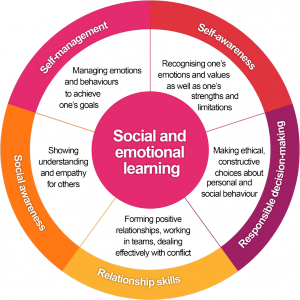Lesson 5: Running Records and Social Development
Attention

Learning Outcomes
Upon completion of this lesson's material, students will be able
- Demonstrate competence in use of running records to document children's social interactions.
- Explain why play is an important component of a child's development.
- Demonstrate knowledge of how classroom areas are designed to encourage learning through play.
- Connect the observation to the appropriate MELDS.
Teaching
Read Chapter 4 in Week by Week
The Running Record is documentation of events as they are occurring. It is lengthy and requires the observer to have the time and ability to be separated from the class in order to complete it with accuracy. This tool should take a minimum of 10-15 minutes to complete and should capture quoted conversations, actions and expressions. See page 108 of the text for an example. Note Lesson 2 “Objective and Subjective” lessons.
Running Records are best used to evaluate social situations or behaviors where you are looking for causes and effects. For example: Tommy cries each morning around 10:00, prior to the transition time. You could use this tool to attempt to determine what is happening before, during and after this common event. You complete a RR and find out that Tommy becomes very involved in playing with trucks and has a difficult time leaving the area. In your summary, you decide to give Tommy an individual warning 10 minutes before the transition and allow him a special space to “park” his truck. You follow up with further observations to determine if your new approach is working.
The best way to find time to do this type of record is during a free play or station time. If you are trying to observe a specific experience or event, you should set up an activity that children can negotiate independently that will involve your targeted observation. For example: if you want to observe children sharing you could open a block area and encourage children to play in small groups. The important piece is to pre plan your environment so that children will need little or no teacher assistance.
Play is the natural vehicle for learning for young children. It is an essential part of every developmentally appropriate program. Free play time should allow students the opportunity to choose activities, interact with peers, experiment, create games, work with intentionally placed toys, games and manipulatives. Children learn numerous social competencies when they have the opportunity to freely engage with peers, such as rule making, sharing and group roles.
Please check out the following site for more information on the importance of play in the early childhood classroom. You may want to use this information as a reference for your weekly assignment.
Click HERE for an example of a comprehensive social competence checklist. Note the four different types of interactions this checklist offers.
Assessment
Lesson 5 Assignment A
You will be using the Anecdotal Record Form for this assignment. Complete a Running Record, focusing on the social interaction between children during free play time. Use the form provided. You must keep time and the record should be a minimum of 10-15 minutes long. Include quoted conversation. Remember this is an objective tool and all opinion should be included in the comments and summary portion of the record.
Write a summary of this record. Include the types of play you observed (as stated on page 120 of the text). What evidence in the record support this? Identify the Maine Early Learning Development Standard that your focus child exhibited from the Social Development section.
http://www.maine.gov/doe/publicpreschool/documents/Maine-ELDS.pdf
Obtain written permission from the appropriate person before you observe.
Submit a version of this form to the Lesson 5 Assignment Drop Box.
Lesson 5 Assignment B
Create one page posters for 5 classroom areas (ex: dramatic play, water table, etc). This means a total of 5 posters, one for each area. They should describe what children are learning when they are working in these areas. The purpose is to demonstrate how children are learning through play. You should use MELDS and the website from the teaching section as reference materials.
Lesson 5 Discussion
Read the article Rough Play
Discuss an incident where you have witnessed or dealt with children engaging in rough and tumble play. How was the situation handled? Did the teacher (or yourself) use an approach that would be supported by this article? How does this document influence your thinking?